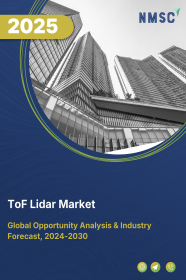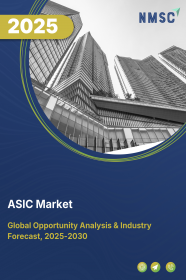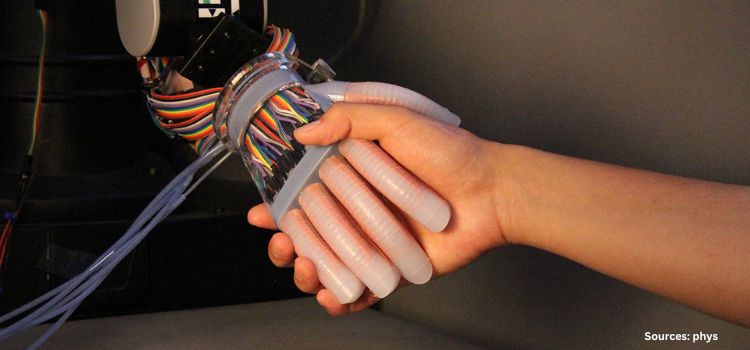
ToF Lidar Market by Type (Direct ToF and Indirect ToF), by Component (Transmitter, Receiver, Optics, Driver Electronics, and a Computing/Interface Unit), by Applications (Robot Navigation, Vehicle Monitoring, Object Detection, and Others) and by End-User (Consumer Electronics, Entertainment and Gaming, Industrial, Healthcare, and Aerospace & Defense) – Global Opportunity Analysis and Industry Forecast, 2025 – 2030
US Tariff Impact on ToF Lidar Market
Trump Tariffs Are Reshaping Global Business
ToF Lidar Market Overview
The global Time of Flight (ToF) Lidar Market size was valued at USD 1.99 billion in 2024 and is predicted to reach USD 5.47 billion by 2030 with a CAGR of 18.4% from 2025-2030.
Factors such as increasing demand for autonomous vehicles, rising government initiatives towards smart cities and military spending fuels the growth of the industry. Nevertheless, presence of alternative sensing technologies including stereo depth cameras hinder the market expansion.
On the contrary, innovation of new technology in ToF sensors opens up great opportunities for market growth. Besides, Sony Semiconductor Solutions Corporation, Waveshare Company, STMicroelectronics NV and others are launching several new products in order to stay in the competition. Consequently, the market presents ample opportunities driven by its advanced capabilities and diverse application potential across various sectors.
Growing Demand for Autonomous Vehicles Drives the ToF Lidar Market Growth
The rising demand for autonomous vehicles significantly drives the ToF lidar market demand, as manufacturers require precise, real-time environmental sensing for safe navigation and collision avoidance. ToF lidar delivers high-resolution 3D mapping, enabling critical features like lane-keeping, pedestrian detection, and adaptive cruise control, essential for Level 3 and higher autonomy. Its reliability in diverse lighting and weather conditions outperforms other sensors, making it vital for self-driving cars.
According to McKinsey & Company, the autonomous driving industry is projected to grow from USD 300 billion to USD 400 billion by 2035, driven by consumer trust and investments from companies like Tesla and Waymo, who integrate lidar for enhanced safety.
The expansion of autonomous vehicles in ride-sharing, delivery services, and personal transport amplifies demand. As automakers prioritize safety and regulatory compliance, ToF lidar’s role in ensuring robust navigation systems continues to fuel market growth, positioning it as a cornerstone of autonomous technology development.
Increasing Government Initiatives Towards Smart Cities Fuels Market Growth
Government initiatives promoting smart cities are accelerating ToF lidar adoption to enhance urban infrastructure, traffic management, and environmental monitoring. ToF lidar enables precise 3D mapping for intelligent traffic systems, pedestrian flow analysis, and urban planning, improving safety and efficiency.
For example, it optimizes traffic flow by detecting vehicle density or supports air quality monitoring with integrated sensors. The G20 Global Smart Cities Alliance, led by the World Economic Forum, advocates for technologies to boost urban mobility, with lidar playing a key role. Countries like Singapore, through its Smart Nation initiative, and China, via Xiong’an New Area, deploy lidar for autonomous shuttles and infrastructure mapping. These projects highlight ToF lidar’s contribution to sustainable urban development. As governments invest in connected cities to address population growth and congestion, the demand for lidar’s accurate, real-time data drives market expansion, reinforcing its importance in shaping modern urban ecosystems.
Rising Military Expenditure Boosts the Market Growth
Increasing global military spending fuels, the ToF lidar market trends as defense forces invest in advanced technologies for surveillance, reconnaissance, and targeting. ToF lidar’s high-resolution 3D mapping and real-time data capabilities excel in challenging environments like urban battlegrounds or dense forests, enhancing situational awareness. It supports drone navigation, perimeter security, and missile guidance, offering precision beyond traditional radar. The World Bank reports global defense spending reached USD 2.39 trillion in 2023, up 44.8% from USD 1.65 trillion in 2016, driven by geopolitical tensions. For instance, the U.S. Department of Defense uses lidar in UAVs for reconnaissance, while India’s DRDO explores it for border surveillance. These investments reflect a shift toward modernized defense systems, with ToF lidar as a critical component. As nations prioritize technological superiority, the demand for lidar’s reliable, high-accuracy sensing in military applications continues to drive market growth, solidifying its strategic importance.
Presence of Alternative Sensing Technologies Hinders the ToF Lidar Market Expansion
The availability of alternative sensing technologies, such as stereo depth cameras, which perform effectively in multi-camera setups and are more cost-competitive, limits the growth of the market. These alternatives challenge lidar’s adoption in price-sensitive applications despite its superior precision.
Advent of New Technologies in ToF Sensors Creates Future Opportunities for the Market Growth
Integration of pixel drive technology in ToF lidars is expected to create ample growth opportunities for the market in future. For example, in March 2024, Sony Semiconductor Solutions developed the IMX570 ToF sensor that features a pixel drive processing circuit to reduce the effects of unwanted ambient light. This improves the accuracy and effective operating range of the sensor in highly illuminated environments or outdoors under bright sunshine. Consequently, such technological innovations will shape the future landscape of lidar applications.
Market Segmentations and Scope of the Study
The ToF lidar market report is segmented on the basis of type, component, applications, end-users, and region. On the basis of type, the market is segmented into direct ToF and Indirect ToF. On the basis of component, the market is divided into transmitter, receiver, optics, driver electronics, and a computing/interface unit. On the basis of applications, the market is distributed into robot navigation, vehicle monitoring, object detection, and others. On the basis of end-user, the market is classified into consumer electronics, entertainment and gaming, industrial, healthcare, and aerospace & defense. The regional breakdown includes regions such as North America, Europe, Asia-Pacific, and the Rest of the World (RoW).
Geographical Analysis
North America dominates the ToF lidar market share and is anticipated to continue to dominate during the forecast year. This is due to rise in military spending in the U.S., Canada, and Mexico that boost the market as defense industry prioritizes advanced technologies for enhanced surveillance, reconnaissance and targeting systems. As per Stockholm International Peace Research Institute, the military expenditure in the U.S. summed USD 916.01 billion in 2023 reflecting a value higher than the USD 639.86 billion expenditure observed in 2016. The growing need for precise distance measurements and 3D mapping in defense operations is driving demand for high-tech ToF lidar solutions.
Moreover, the rise in IoT adoption in this region drives the market as industries adopt advanced sensing technologies for automation, smart infrastructure and real-time data analytics. According to the latest report published by the Economic Cooperation and Development, about 30% of companies in Mexico adopted advanced technology including IoT to improve efficiency and create business models. This growing integration of IoT devices demands precise environmental mapping and object detection, fueling the need for this lidar solutions to enhance connectivity and operational efficiency.
On the other side, Asia-Pacific shows faster growth in the ToF lidar technology driven by smart city initiatives as it relies on advanced technologies for efficient urban planning, traffic management, and infrastructure monitoring. For instance, India approved 12 new smart city projects in August 2024 under the National Industrial Corridor Development Programme with an investment of USD 3.41 billion. Such projects increase the need for precise real-time data, accurate mapping, and enhanced environmental sensing that drives demand for lidar solutions to optimize smart city development.
Also, growing robotics industry in this region boosts the ToF lidar sector as robots increasingly rely on advanced sensing technologies for accurate navigation and object detection. This technology offers accurate distance measurement and 3D mapping essential for upgrading the performance and autonomy of robots across various sectors.
The International Federation of Robotics report 2023 stated that Asia leads globally in installation of industrial robots with China at the forefront, recording 290 thousand annual installations of industrial robots. This surge in robotic adoption in industrial automation for enhancing performance and accuracy drives the market.
Strategic Analysis of the Key Companies Operating in the Industry
Key players in the global ToF lidar industry are actively pursuing strategies to enhance the precision, range, and versatility of lidar systems to capture a larger market share and capitalize on significant growth potential.
Recent developments include advancements in high-resolution ToF sensors and the integration of pixel drive processing, which improve performance in challenging environments, increasingly replacing traditional radar systems due to their superior accuracy and real-time data capabilities. There is also a trend toward developing compact, multi-functional lidar systems capable of supporting autonomous vehicles, smart cities, and industrial automation, although challenges remain in achieving cost-effectiveness and scalability compared to alternative sensors.
For instance, in January 2024, Aeva Technologies launched its first automotive-grade lidar sensor, the Atlas, utilizing a ToF approach. This sensor measures distance and speed through changes in light frequency, offering enhanced accuracy that drives the adoption of ToF lidars in autonomous driving.
A key challenge for industry players lies in overcoming the high costs and power consumption of advanced ToF systems, as well as ensuring compatibility across diverse applications. However, significant opportunities exist in refining solid-state lidar designs and integrating AI-driven data processing to enhance real-time environmental mapping.
Moreover, the exploration and validation of ToF lidar for new applications, such as industrial robotics and smart infrastructure, as demonstrated by Sick AG’s June 2023 launch of safeVisionary2, the first 3D time-of-flight camera enhancing safety and efficiency in autonomous mobile robots through precise 3D measurement data—presents considerable opportunities to expand the market and improve functionality across sectors. Future research is focusing on developing cost-effective lidar systems for widespread adoption and optimizing performance based on environmental and operational data, which could further shape market trends and industry growth.
Key Benefits
-
The report provides quantitative analysis and estimations of the industry from 2025 to 2030, which assists in identifying the prevailing market opportunities.
-
The study comprises a deep-dive analysis of the ToF Lidar sector including the current and future trends to depict prevalent investment pockets in the market.
-
Information related to key drivers, restraints, and opportunities and their impact on the ToF lidar is provided in the report.
-
Competitive analysis of the players, along with their market share is provided in the report.
-
SWOT analysis and Porters Five Forces model is elaborated in the study.
-
Value chain analysis in the market study provides a clear picture of roles of stakeholders.
ToF Lidar Market Key Segments
By Type
-
Direct ToF
-
Indirect ToF
By Component
-
Transmitter
-
Receiver
-
Optics
-
Driver Electronics
-
Computing/Interface Unit
By Applications
-
Robot Navigation
-
Vehicle Monitoring
-
Object Detection
-
Others
By End-User
-
Consumer Electronics
-
Entertainment and Gaming
-
Industrial
-
Healthcare
-
Aerospace & Defense
By Region
-
North America
-
The U.S.
-
Canada
-
Mexico
-
-
Europe
-
The UK
-
Germany
-
France
-
Italy
-
Spain
-
Denmark
-
Netherlands
-
Finland
-
Sweden
-
Norway
-
Russia
-
Rest of Europe
-
-
Asia-Pacific
-
China
-
Japan
-
India
-
South Korea
-
Australia
-
Indonesia
-
Singapore
-
Taiwan
-
Thailand
-
Rest of Asia-Pacific
-
-
RoW
-
Latin America
-
Middle East
-
Africa
-
Key Players
-
Sony Semiconductor Solutions Corporation
-
Waveshare Company
-
STMicroelectronics NV
-
Infineon Technologies AG
-
Aeva Technologies
-
Sick AG
-
Melexis
-
OSRAM Licht AG
-
Leica Geosystems AG
-
FRAMOS
-
Sharp Corporation
-
Gargantua Co. Ltd.
-
Chengdu JRT Meter Technology Co., Ltd.
-
GZ Cyndar Co., Ltd.
-
Riegl Ltd.
REPORT SCOPE AND SEGMENTATION:
|
Parameters |
Details |
|
Market Size in 2024 |
USD 1.99 Billion |
|
Revenue Forecast in 2030 |
USD 5.47 Billion |
|
Growth Rate |
CAGR of 18.4% from 2025 to 2030 |
|
Analysis Period |
2024–2030 |
|
Base Year Considered |
2023 |
|
Forecast Period |
2025–2030 |
|
Market Size Estimation |
Billion (USD) |
|
Growth Factors |
|
|
Countries Covered |
28 |
|
Companies Profiled |
15 |
|
Market Share |
Available for 10 companies |
|
Customization Scope |
Free customization (equivalent up to 80 working hours of analysts) after purchase. Addition or alteration to country, regional, and segment scope. |
|
Pricing and Purchase Options |
Avail customized purchase options to meet your exact research needs. |

















 Speak to Our Analyst
Speak to Our Analyst




















